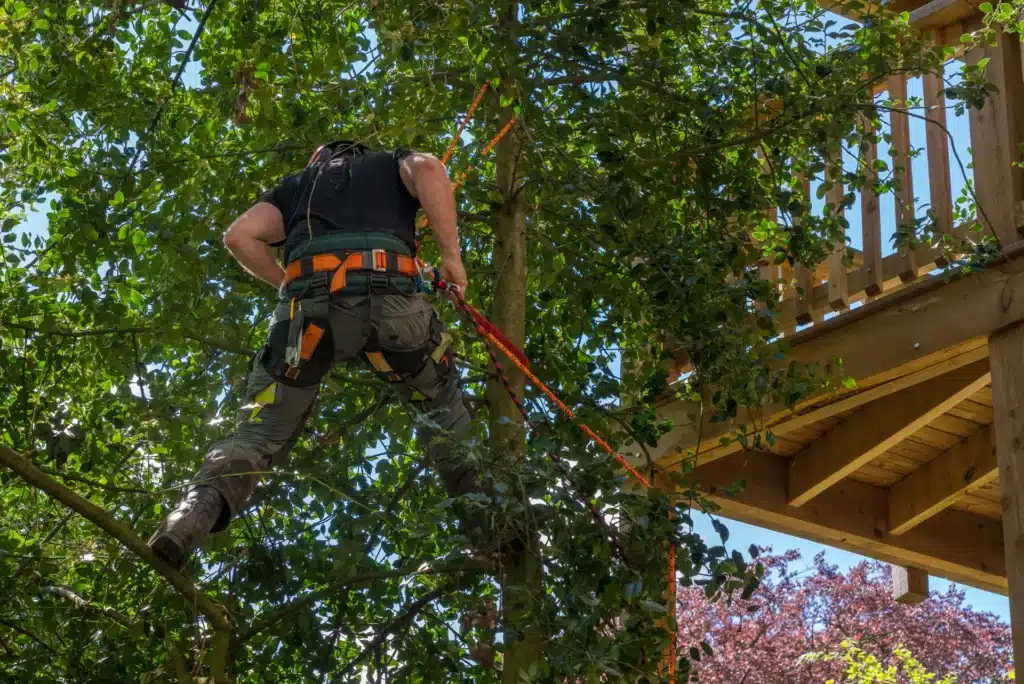Magnolia trees, with their beautiful blossoms and elegant height, need meticulous care, especially when it comes to trimming. Understanding the best time to trim magnolia tree branches is critical for their health and appearance. This tutorial digs into the specifics of when and how to trim magnolia trees. This article aims to provide you with the knowledge you need to care for bright and growing magnolia trees throughout the year by addressing seasonal concerns, expert insights, and practical guidance.
Why trim magnolia branches at the best time?
Best time to trim magnolia tree branches is critical for various reasons. This corresponds to the tree’s normal development cycle, specifically after flowering.
The magnolia tree grows and recovers rapidly after blooming. Trimming during this time of year helps the tree to focus its energy on future development without jeopardizing the current season’s flowers. It encourages healthy regrowth while shaping the tree and keeping its visual appeal.
Furthermore, trimming at this time period decreases the chance of frost damage, particularly in areas where late frosts are a problem. Trimming a tree too early, such as in the winter or early spring, might expose the tree to frost damage on the fresh cuts.
Benefits of Trimming Magnolia Tree Branches
Encourages Healthy development: Pruning on a regular and sensible basis encourages healthy new development by removing dead or weak branches. This process directs the tree’s energy toward new, vigorous growth, resulting in a fuller, more vivid look.
Improves Air Circulation: By thinned out congested branches, airflow within the canopy is enhanced. Airflow is important because it minimizes the danger of fungal infections and other illnesses that flourish in stagnant, damp environments.
Improves Aesthetics: Pruning magnolia trees not only keeps them healthy, but it also improves their appearance. Well-trimmed magnolias have a balanced form and canopy, which contributes to their beauty.
Promotes Flowering: Strategic trimming after the flowering season might foster prolific blooms in coming years. Flowering may be maximized by removing wasted blooms and adjusting the tree’s growth pattern.
Factors Influencing Trimming Time of magnolia branches
There are certain factors that influence the best time for trimming magnolia branches. Determining the opportune moment for trimming magnolia trees involves considering various factors that can significantly impact the health and growth of the tree. The best time to trim magnolia tree branches is determined by many critical elements that have a substantial impact on the tree’s health and growth. Weather and temperature are two significant factors. Trimming is most effective during the warmer months, often late spring to early summer, when the risk of frost has passed. Trimming should be avoided during frost-prone months since it might impair the tree’s new growth.
The Flowering Cycle is another important thing to consider. Pruning actions should be performed shortly after the flowering season has ended. This method promotes healthy regrowth while conserving the tree’s lovely flowers. Trimming during this stage guarantees that the tree’s flowering cycle is not disrupted.
Understanding these characteristics is critical in determining the optimal time to trim magnolia tree branches. Pruning actions may be deliberately planned by taking into account weather conditions, temperature influence, and blooming cycle, boosting the tree’s general well-being and lifespan.
Best Time to Trim Magnolia Tree Branches
The optimal time to trim magnolia tree branches is critical for the tree’s health and growth. Late April appears to be the best time for this task. Trimming should be done in late May to early June, after the magnolia tree has completed flowering.
This timing is deliberate for a number of reasons. For starters, delaying until after the blossoming season guarantees that the tree’s blooms remain intact, keeping its visual appeal. Furthermore, cutting after flowering promotes healthy regrowth while not interfering with the tree’s potential to produce magnificent blooms the next season.
Trimming in late spring helps the magnolia tree to benefit from the growth surge that occurs around this time. By eliminating dead or unneeded branches, you help the tree’s general health by allowing it to put its energy into new growth and development.
Remember that the aim of trimming at this period is not to extensively prune the tree, but to do mild pruning for maintenance purposes. This method preserves the contour of the magnolia tree and promotes a healthier structure without affecting its inherent beauty or growth potential.
Magnolia Pruning: Dos and Don’ts
Certain dos and don’ts must be followed while trimming magnolia trees to maintain their best health and growth:
Dos:
Light Pruning: Use light pruning to remove dead or diseased branches and improve air circulation throughout the tree. This improves the general health and vitality of the tree.
After Flowering: Trim magnolia trees after their flowering time has ended, which is usually in late spring or early summer. This timing protects the tree’s flowers while also fostering future development.
Use Proper Tools: To make precise cuts, use sharp, clean pruning shears or tools. This reduces tree damage and encourages faster healing of the cut regions.
Don’ts:
Avoid Excessive or Heavy Pruning: Avoid excessive or heavy pruning, particularly at the optimal time to trim magnolia tree branches. Excessive trimming might stress the tree and impair its capacity to blossom and develop correctly.
Avoid Fall trimming: Avoid trimming magnolia trees in the fall since it may impair their capacity to resist winter conditions. Pruning during this season may expose the tree to frost damage.
Avoid chopping Healthy Branches: Avoid chopping healthy branches needlessly. Pruning should be done with the intention of eliminating dead or troublesome branches rather than healthy ones.
Following these pruning dos and don’ts helps preserve the health, form, and beauty of your magnolia trees while assuring their continuing thriving in your environment.
FAQS
Is it okay to prune my Magnolia tree in the winter?
No, don’t trim in the winter: Pruning in the winter might expose the tree to severe weather and impair its capacity to recover.
Is it necessary to trim the branches of a Magnolia tree on a regular basis?
Light pruning is advised: Regular, gentle pruning aids in the preservation of the tree’s health and attractiveness.
How Far Back Can Magnolia Tree Branches Be Cut?
Prevent Excessive Cutting: Only eliminate branches that are interfering with growth, and keep cuts to a third of the length of the branch.
What Are the Best Magnolia Tree Trimming Tools?
Pruning Shears with a Sharp Edge: To achieve smooth cuts and little tree damage, use clean, sharp shears.
Will Magnolia Tree Trimming Affect Flowering?
Trimming strategically improves flowering: Pruning properly promotes better flowering the next season.
Can I prune my Magnolia Tree whenever I want?
Post-flowering trimming is preferred: While it is not detrimental, post-flowering pruning is recommended for maximum tree health.
Conclusion
Finally, knowing the importance of best timing to trim magnolia tree branches is critical for their general health and vitality. The best time for trimming, often late spring after the flowering phase, is critical to the tree’s growth cycle.
Trimming actions can help the magnolia tree capitalize on its growth surge, diverting its energy to new development while keeping its lovely flowers. This deliberate technique not only forms the tree but also increases its resistance to frost damage.
Furthermore, using suitable pruning techniques, such as selective branch removal and avoiding severe cutting, protects the structural integrity and aesthetic appeal of the tree.





